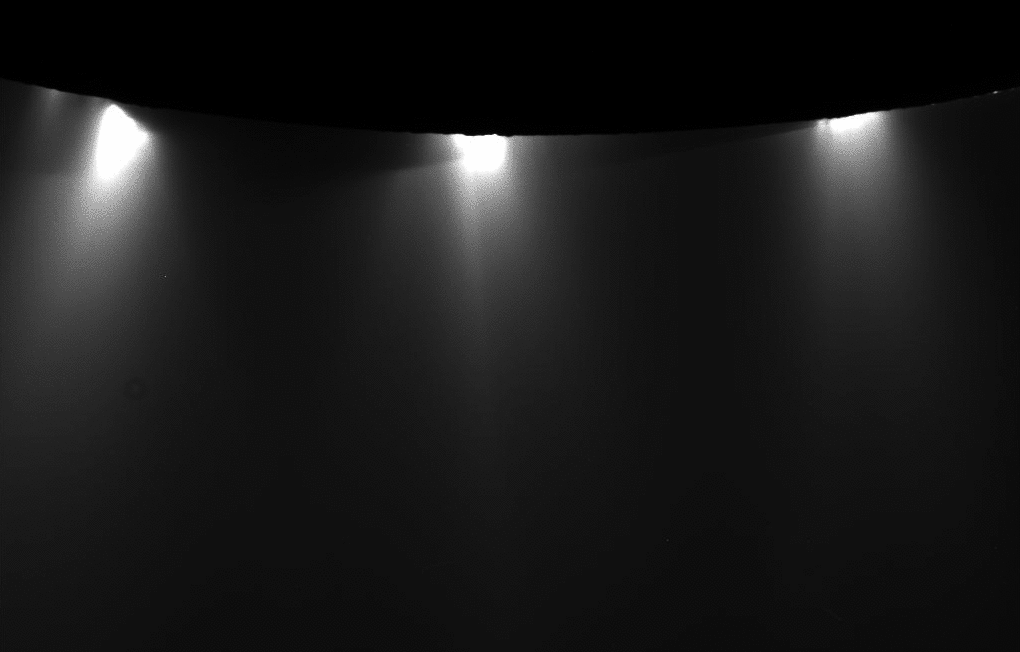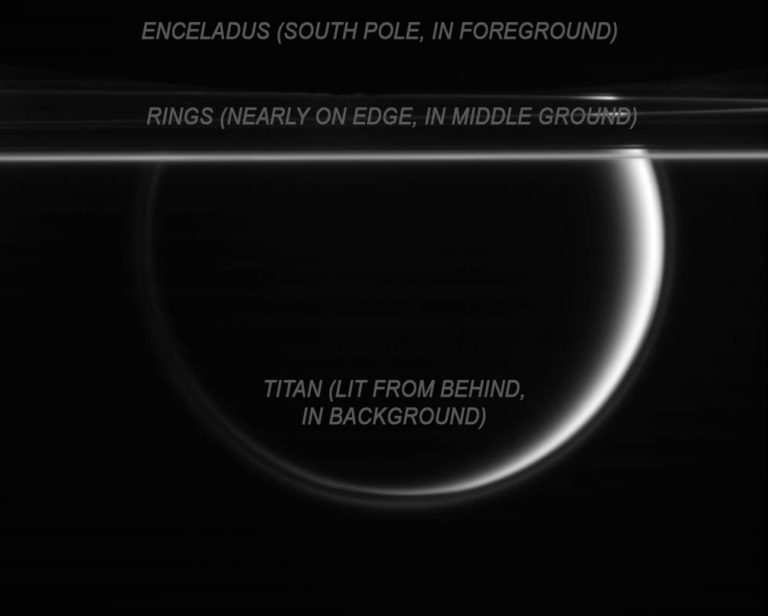Emily Lakdawalla • May 19, 2010
The most amazing image of Enceladus Cassini has captured yet
Every time I think Cassini has captured the coolest image of Enceladus ever, it does better.
Late in the day, several more images showed up on the Cassini raw images website from the latest Enceladus encounter. Among them were six frames captured as Cassini approached the moon from its night side, sighting across the dark southern pole to its backlit geysers. Here are four frames from that sequence. The fifth one caught something bright in the background that caused some serious pixel bleeding, so I threw it out. The sixth frame -- well, that one I'll get to in a moment.

I could watch that animation over and over. You can see the curve of Enceladus' slightly bumpy disk at the top; those bumps spread wider over the course of the four frames, as Cassini is rapidly approaching its flyby. On the extreme right, in the first two frames, you just catch a couple of sunlit pixels at the extreme pointy end of what would be Enceladus' sunlit crescent, which is otherwise out of frame. We can clearly see three plumes, presumably from three of the four major sulci that seam Enceladus' south pole. There are some odd shadowing effects in the background that I don't quite understand. But I don't have to understand them to appreciate the awesomeness of that series.
Oh, but it gets better yet. Skipping the saturated fifth frame, we get to the sixth frame. That curve of Enceladus' dark south pole is still visible at the top of the frame, with the same bumps, just a tad wider as Cassini has gotten closer. But what has risen (or sunk, I guess) from over the horizon? Oh, it's just Saturn's rings and its largest moon Titan with its atmosphere backlit by the Sun, that's all; and the sunlit bits of atmosphere peek through the semitransparent rings here and there. OMG.

(In case you can't quite figure out what's going on in this image, here's a diagram.)

OK, still with me? Now imagine you were flying along with Cassini. This is more or less what you might have seen; the fourth frame merged with the sixth frame to create a view of Titan, and the rings of Saturn, seen through a curtain of Enceladan plumes, with the dark edge of Enceladus' disk curving above.

Wow.
Thanks to all the men and women on the Cassini team for making such awe-inspiring sights happen again and again.
Support our core enterprises
Your support powers our mission to explore worlds, find life, and defend Earth. You make all the difference when you make a gift. Give today!
Donate

 Explore Worlds
Explore Worlds Find Life
Find Life Defend Earth
Defend Earth

